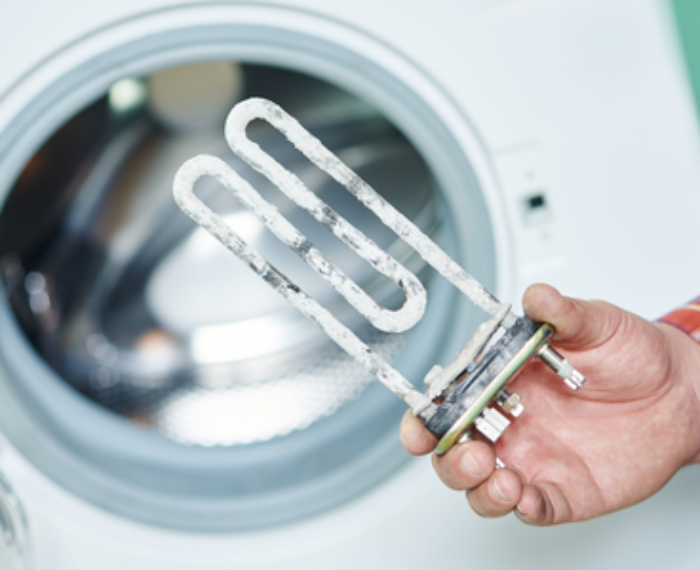Hard water usually gets blamed for the limescale that builds up in kettles and causes laundry to become stiff. The kitchen suffers from hard water effects which remain less noticeable but create equal frustration. The water flowing from your tap could be quietly destroying your recipes and ruining your favourite beverages while diminishing the flavour of your carefully prepared meals.
This article reveals the impact of hard water on cooking and baking procedures, as well as beverage preparation while highlighting how a water conditioner works as a concealed kitchen component for improved taste and kitchen efficiency.
What Is Hard Water, Really?
Water becomes hard when it contains substantial levels of dissolved minerals, such as calcium and magnesium. Although these minerals pose no health risks they disrupt cooking through various hidden mechanisms.
Water mineral content affects cooking more than you might think, through changes in taste and cooking duration.
1. Dull Flavours and Off Tastes
The most prominent effect of hard water becomes evident through its alteration of food flavours. Hard water minerals react with specific cooking components resulting in muted flavours and a slight chalky texture in the completed dish.
Delicate dishes such as soups, sauces and broths require clean water to maintain their clarity and balanced taste. The mineral content of hard water alters the taste of basic foods such as pasta and rice by introducing an unwanted mineral residue to their flavour.
Beverages suffer too. People who drink tea and coffee may observe a filmy surface on their beverage and find their drink tastes less intense. The presence of hard water disrupts the aromatic components within tea leaves and coffee grounds resulting in a less pleasurable beverage experience and wasted coffee beans.
2. Tougher Textures and Longer Cooking Times
Hard water impacts beverages by altering their taste and texture. The outer layers of beans, pasta and grains become harder due to minerals which results in increased cooking times and tougher food textures.
Dried beans and lentils are particularly sensitive. When you soak legumes in hard water their exterior becomes tougher rather than softer. Cooking with hard water requires longer stove time and produces unpredictable textures while making chickpeas impossible to mash and lentils remain coarse.
The effects of hard water become even more complex when applied to baking processes. In hard water, floury dough textures change when calcium and magnesium react with gluten proteins. Breads may turn denser and more difficult to knead when using recipes that demand precise hydration and fermentation processes.
3. Disruption in Fermentation
The fermentation process requires careful control and is particularly crucial in baking and pickling. Water chemistry creates essential conditions where yeast and bacteria can flourish.
The abundance of minerals in hard water interferes with yeast and sourdough culture performance which results in inconsistent or delayed rising times. Bakers who utilise wild fermentation methods or keep sourdough starters could face serious challenges. The balance of minerals in home pickling and fermenting processes can interfere with bacterial cultures which leads to changes in flavour and potential safety risks.
4. The Hidden Cost: More Detergent, More Energy
The problems don’t stop at the stove. The entire kitchen operation is influenced by hard water. The poor soap lathering of hard water requires increased detergent amounts for cleaning kitchen items. Kettles, coffee machines and dishwashers experience reduced efficiency and shorter lifespans due to limescale buildup over time.
The outcome is increased energy consumption paired with additional maintenance tasks and growing frustration levels. Not to mention the cosmetic impact: The cosmetic effects include white spots appearing on glassware along with cloudy surfaces and clean dishes that lack shine.
5. It’s Not Just Cooking, It’s Your Ingredients Too
Your cooking process with hard water impacts both the food and the ingredients used.
Cooking vegetables in hard water causes them to lose their bright colours and appear dull or grey because of the reaction between water minerals and vegetable pigments.
Minerals in hard water work as additional “dough conditioners” leading to bread and pastry that turns out saltier and stiffer than expected.
Curdling is more common in dairy-based dishes like custards and creamy sauces because calcium ions speed up protein separation in milk.
The kitchen demands consistency, yet hard water makes this difficult while diminishing the value of premium ingredients.
What’s the Solution?
The best way to mitigate hard water’s subtle disruptions in the kitchen is by treating the water directly at its origin.
Water conditioners address mineral problems naturally without removing essential water properties. A true water conditioner changes the mineral structure which prevents limescale buildup, but keeps water safe for consumption unlike traditional salt-based softeners that swap calcium and magnesium with sodium.
Conditioning water preserves its original flavour and avoids performance problems instead of changing its chemical makeup. Any home cook who cares about culinary flavour, along with efficient kitchen operation and long-lasting equipment will find this the perfect balance.
Better Water, Better Food
The act of preparing food requires complete attention to every tiny element since it engages all senses. If your cooking water is negatively affecting your ingredients and equipment while producing subpar results, you need to reconsider your tap water.
Conditioned water represents an easy kitchen improvement that many home cooks have overlooked. You will notice enhancements in your meals with tastier teas and fluffier rice along with smoother sauces and faster boiling times.
If your cooking results fall short of expectations then investigate your water source instead of only reviewing your recipes. Look at your water.



